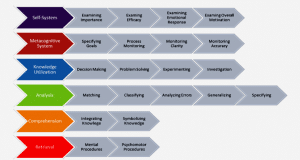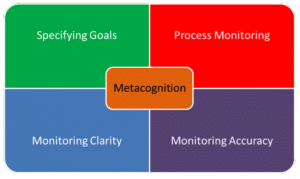Learner Goal Setting and Monitoring: The Science of “Leading their Learning”
CompetencyWorks Blog
This article was originally published in the Reinventing Schools Coalition January newsletter.
 Research shows that engagement in learning motivates and deepens understanding. To help students begin to “own their learning,” they will require clarity, feedback, and an association with the targeted content or skill. As effective teachers and leaders, we begin the learning process with students by ensuring clarity as to what they need to know (informational domain) and be able to do (mental and psychomotor procedures).
Research shows that engagement in learning motivates and deepens understanding. To help students begin to “own their learning,” they will require clarity, feedback, and an association with the targeted content or skill. As effective teachers and leaders, we begin the learning process with students by ensuring clarity as to what they need to know (informational domain) and be able to do (mental and psychomotor procedures).
Using the “new taxonomy” helps make meaning of this, as it looks at how the information is being used or processed by the learner. The taxonomy is broken down into six levels (diagram at left). The lower four levels of mental processing are cognitive levels. Each refers to how the information is being used or how learning might be demonstrated with deepening understanding or rigor. Using the taxonomy clarifies what a learner needs to do with the information to succeed at the next levels.
Clarification of learning outcomes, by itself, does not guarantee student success. Combining the taxonomic roadmap with specific formative feedback and providing the information in a context that each student can connect with leads toward personal mastery of that learning. In other words, we want students to not only process information cognitively, but also metacognitively, which then influences self-esteem (refer to top two levels of diagram).
All students need to view themselves as learners. One strategy that supports this desired outcome is goal setting. When thinking about goal setting with students and their continued engagement toward mastery, both the teacher and learner need to be aware of how they will process the information, with a progression of rigor or deepening understanding, and ultimately how they will use it as a demonstration of their learning.
More on Metacognition
The diagram illustrates the components that drive a learner’s metacognition. A learner’s metacognitive system is responsible for monitoring, evaluating, and regulating the functioning of all other types of thought. Marzano and Kendall mention these processes working together to form the “so-called executive control.” Goal setting is essential for students to “own their learning.”
Specifying goals: The learner executes this function when they determine a specific goal to increase competence and a plan for executing the learning as related to the type of knowledge.
Process monitoring: The learner monitors the effectiveness of the process and procedure to meet the goal they have identified.
Monitoring clarity: An indication to the learner’s disposition to the knowledge, through their monitoring clarity and accuracy. “Monitoring clarity involves determining the extent to which an individual is free from indistinction and ambiguity about knowledge.”
Monitoring accuracy: Determine the extent to which the individual is correct in terms of understanding specific knowledge. The learner will typically check their understanding by seeking out further information.
Delivering on the Promise establishes connections between learner motivation and the learner’s ability to connect to their “self-system.” According to authors Marzano and Kendall, the learner’s ability to initially learn or to deepen their competence in a given knowledge component is a function of three factors:
• Perceptions of its importance
• Perceptions of its efficacy
• Emotional response to the knowledge component.
Daniel Joseph is an Education Specialist with the Reinventing Schools Coalition (RISC) and an educational leader in the State of Maine. He has worked with his local school district, the State Department of Education, and a variety of other partnerships to transform the educational system. You can read a full biography here.